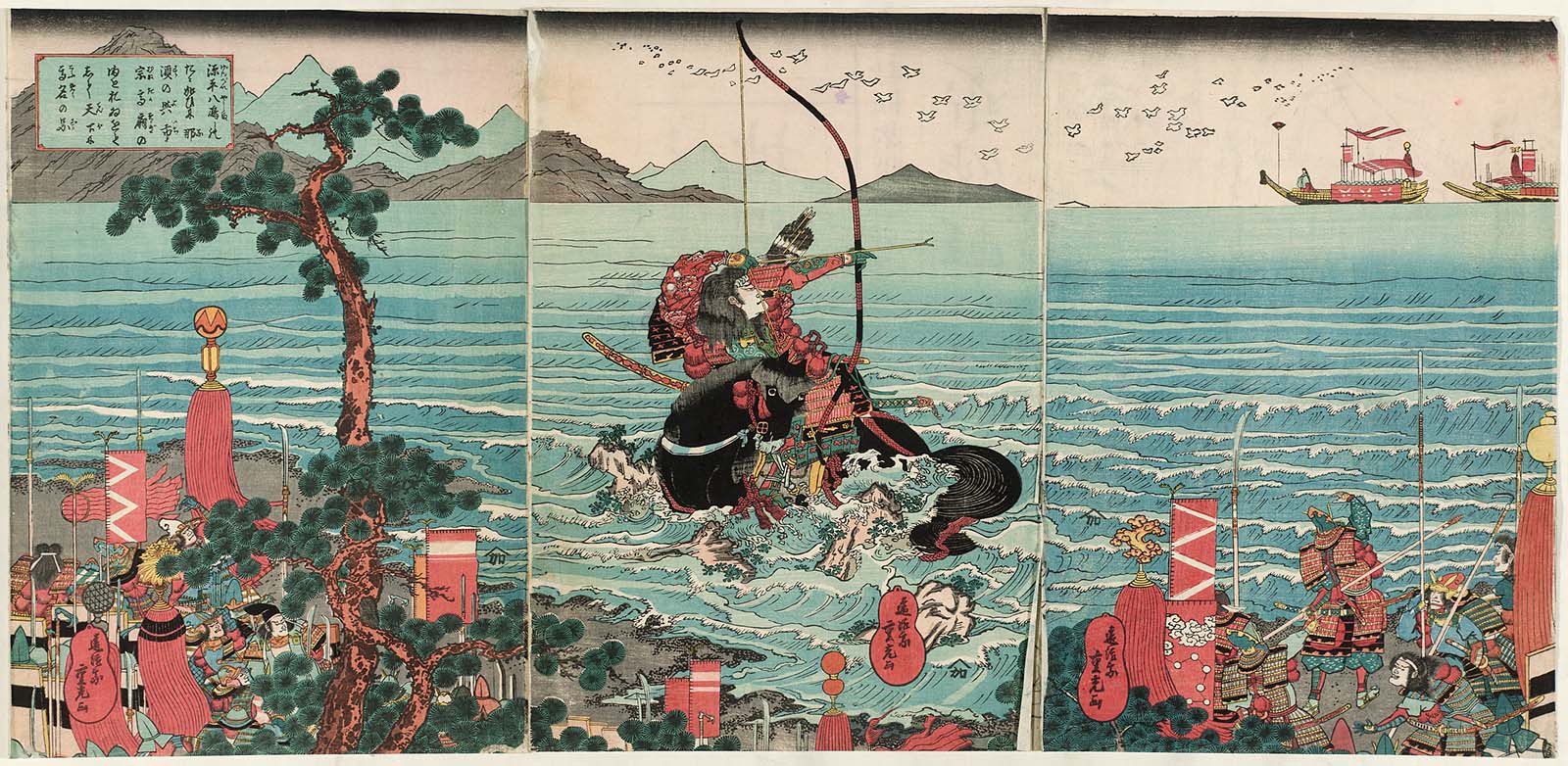
The Taira and Minamoto were the dominant clans in Japan and had been fighting since the Hogen Incident in 1156 CE and the Heiji Rebellion four years later,
in which samurai from both clans fought to establish a hierarchy.
The Taira came out on top; the Minamoto sought revenge for their defeat.
The Genpei War started in 1180 CE, when the Taira put the two year old prince Antoku on the throne.
Prince Mochihito, who also held a claim, felt cheated and rebelled with support from Minamoto Yorimasa and many ashigaru (footsoldiers) and sohei.
The uprising was not well planned and soon the Minamoto faced a smaller but superior Taira force.
Despite a heroic defense at the bridge over the river Uji they could not hold.
Mochihito was killed in the battle; Yorimasa wrote a farewell poem and then committed suicide.
However, the rebellion continued.
Minamoto Yoritomo, leader of the clan, seems not to have been a great commander.
He was defeated at the Battle of Ishibashiyama, retreated eastwards and there was helped by the Takeda and other families.
He established a base at Kamakura and appointed his younger brother Yoshitsune as commander.
The Taira scored more victories in the next year, but could not dislodge the Minamoto.
Yoritomo set up a kind of feudal system that bound many samurai to his house.
Then a famine hit Japan and fighting ceased for two years.
In 1183 CE the war resumed.
The Minamoto had gained in strength and their general Yoshinaka won several important battles by smart tactics and boldness.
Yoshinaka wanted power and honor for himself, but with his son a hostage of Yoritomo, he had to temporarily acknowledge the latter as his superior.
He drove the Taira back to Kyoto and then they had to give up their capital too, pulling further back to the south.
A year later, after the capture of Kyoto, there was open infighting between Minamoto Yoshinaka and Yoshitsune, who fought for Yoritomo.
The latter had, together with his companion sohei Benkei, performed so many acts of bravery that they became the stuff of legend.
With his younger brothers he managed to to drive Yoshinaka back to Awazu and defeat him.
This battle is also noted for the deeds of Tomoe Gozen, a female warrior-concubine, who killed three samurai in single combat.
The Minamoto unity forcefully restored, the advance on the Taira was resumed.
Eventually Yoshitsune moved in to the Taira stronghold Ichi-no-tani on the coast.
After attacking the fortress from two sides he and his samurai defeated the Taira on the beach.
However the young emperor escaped to the island of Kyushu and kept the hopes of the Taira alive.
Because they had retreated to Shikoku and Kyushu and had a superior fleet, it took half a year before the Minamoto resumed their offensive.
The war was finally settled in the Battle of Dano-no-ura in 1185 CE, a naval battle in the Straits of Shimonoseki.
Instead of establishing himself as emperor in Kyoto, Yoritomo stayed in Kamakura and became shogun.
He established the Kamakura Bakufu, where the samurai held power and the emperor was their puppet.
War Matrix - Gempei War
Knightly Era 1066 CE - 1206 CE, Wars and campaigns


